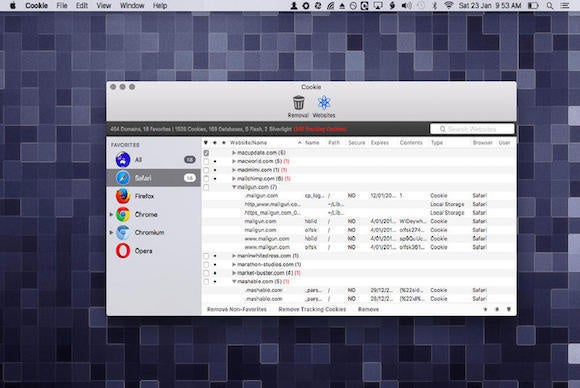Write a program that asks the user for the number of males and the number of females registered in a class. The program should display the percentage of males and females in the class.
Hint: Suppose there are 8 males and 12 females in a class. There are 20 students in the


class. The percentage of males can be calculated as 8/4=0.4,or 40%. The percentage
The 5.0.4 update of the PC emulator for Mac includes a renewed version of the VPC Additions, which are self-installing transparently to the user, as well as a password protection system that prevents unwanted modification of the settings of the emulated PC. Cadets collected a sample of 42 bags of Chips Ahoy! Cookies, bought from locations all across the country to verify this claim. The cookies were dissolved in water and the number of chips (any a t=: = 7 = For each R problem, turn in answers to questions with the written portion of the homework. The 5.0.4 update of the PC emulator for Mac includes a renewed version of the VPC Additions, which are self-installing transparently to the user, as well as a password protection system that prevents unwanted modification of the settings of the emulated PC.
Pub rsa4096/118BCCB6 2018-06-05 SC expires: 2022-06-04 Key fingerprint = CBAF 69F1 73A0 FEA4 B537 F470 D66C 9593 118B CCB6 uid Christoph M. Becker pub 2048D/5DA04B5D 2012-03-19 Key fingerprint = F382 5282 6ACD 957E F380 D39F 2F79 56BC 5DA0 4B5D uid Stanislav Malyshev (PHP key) uid Stanislav Malyshev (PHP key) uid Stanislav. Microsoft Windows© 10 – 64-bit – Latest Update 2.5 GHz Intel Core i3 or superior (4th generation). 4 GB RAM ASIO and WASAPI drivers. MacOS© 10.13 and superior. Intel Core i3 and superior.
of females can be calculated as 12/20=0.6, or 60%.
Solution
males = int( Input( “Please enter the number of males in the class: ” ) )
females = int( Input( “Please enter the number of females in the class: ” ) )
totalStudents = males + females
malePercentage = ( males / totalStudents ) * 100
femalePercentage = ( females / totalStudents ) *100
print( “Male percentage: ” + str( malesPercentage ) )


print( “Female percentage: ” +str( femalePercentage ) )
Related Posts
EFFECTIVENESS OF GLUTEUS MAXIMUS FASCIA PLASTY FLAP FOR CLOSURE OF WOUND IN SURGICAL TREATMENT OF PILONIDAL DISEASE
- Authors: Kitsenko Y.E.1, Shlyk D.D1, Tulina I.A1, Markaryan D.R1, Tsarkov P.V1
- Affiliations:
- I.M. Sechenov First Moscow State Medical University (Sechenov University)
- Issue: Vol 24, No 5 (2018)
- Pages: 233-236
- Section: Articles
- URL:https://journals.eco-vector.com/0869-2106/article/view/38455
- DOI:https://doi.org/10.18821/0869-2106-2018-24-5-233-236
Keywords
Yury E. Kitsenko
I.M. Sechenov First Moscow State Medical University (Sechenov University)
Email: kitsenko@kkmx.ru
119991, Moscow, Russian Federation
assistant professor, Department of surgery, faculty of preventive medicine “I.M. Sechenov First Moscow State Medical University (Sechenov University)”, 119991, Moscow, Russian Federation
D. D Shlyk
I.M. Sechenov First Moscow State Medical University (Sechenov University) 119991, Moscow, Russian Federation
I. A Tulina
Cookie 5.0.4 Game
I.M. Sechenov First Moscow State Medical University (Sechenov University) 119991, Moscow, Russian Federation
D. R Markaryan
I.M. Sechenov First Moscow State Medical University (Sechenov University) 119991, Moscow, Russian Federation
Cookie 5.0.4 Pack
P. V Tsarkov
I.M. Sechenov First Moscow State Medical University (Sechenov University) 119991, Moscow, Russian Federation
- Sondenaa K., Andersen E., Nesvik I., Soreide J.A. Patient characteristics and symptoms in chronic pilonidal sinus disease. International journal of colorectal disease. 1995; 10(1): 39-42.
- Chintapatla S., Safarani N., Kumar S., Haboubi N. Sacrococcygeal pilonidal sinus: historical review, pathological insight and surgical options. Techniques in coloproctology. 2003; 7(1): 3-8.
- Clothier P.R., Haywood I.R. The natural history of the post anal (pilonidal) sinus. Annals of the Royal College of Surgeons of England. 1984; 66(3): 201-3.
- Дульцев Ю.В., Ривкин В.Л. Эпителиальный копчиковый ход. М.: Медицина; 1988
- Iesalnieks I., Furst A., Rentsch M., Jauch K.W. [Primary midline closure after excision of a pilonidal sinus is associated with a high recurrence rate]. Der Chirurg; Zeitschrift fur alle Gebiete der operativen Medizen. 2003;74(5):461-8. In German.
- Hosseini S.V., Rezazadehkermani М., Roshanravan М., Muzhir Gabash К., Aghaie-Afshar М. Pilonidal Disease: Review of Recent Literature. Ann Colorectal Res. 2014; 2.
- Iesalnieks I., Ommer A., Petersen S., Doll D., Herold A. German national guideline on the management of pilonidal disease. Langenbeck’s archives of surgery. 2016; 401(5): 599-609.
- Karydakis G.E. Easy and successful treatment of pilonidal sinus after explanation of its causative process. The Australian and New Zealand journal of surgery. 1992; 62(5): 385-9.
- Enriquez-Navascues J.M., Emparanza J.I., Alkorta M., Placer C. Meta-analysis of randomized controlled trials comparing different techniques with primary closure for chronic pilonidal sinus. Techniques in coloproctology. 2014; 18(10): 863-72.
- Arslan S., Karadeniz E., Ozturk G., Aydinli B., Bayraktutan M.C., Atamanalp S.S. Modified Primary Closure Method for the Treatment of Pilonidal Sinus. The Eurasian journal of medicine. 2016; 48(2): 84-9.
- Царьков П.В., Кравченко А.Ю., Тулина И.А., Лукьянова Е.С. Способ ушивания раны крестцово-копчиковой области. Патент 2604768. 2016
- Dindo D., Demartines N., Clavien P.A. Classification of surgical complications: a new proposal with evaluation in a cohort of 6336 patients and results of a survey. Annals of surgery. 2004; 240(2): 205-13.
- McCallum I.J., King P.M., Bruce J. Healing by primary closure versus open healing after surgery for pilonidal sinus: systematic review and meta-analysis. BMJ. 2008; 336(7649): 868-71.
- Tavassoli A., Noorshafiee S., Nazarzadeh R. Comparison of excision with primary repair versus Limberg flap. International journal of surgery. 2011; 9(4): 343-6.
- Nursal T.Z., Ezer A., Caliskan K., Torer N., Belli S., Moray G. Prospective randomized controlled trial comparing V-Y advancement flap with primary suture methods in pilonidal disease. American journal of surgery. 2010; 199(2): 170-7.
- Elshazly W.G., Said K. Clinical trial comparing excision and primary closure with modified Limberg flap in the treatment of uncomplicated sacrococcygeal pilonidal disease. Alexandria Journal of Medicine. 2012; 48(1): 13-8.
Cookie 5.0.4 Minecraft
Cited-By
Cookie 5.0.4 Pro
Article Metrics
Refbacks
- There are currently no refbacks.